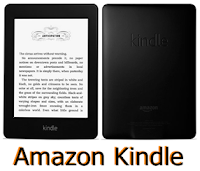Google launched Google+ Collections in May 2015. It’s a new feature in Google’s social network to help organize posts.
With Collections, users can group their posts, including pictures and videos, based on topic. Doing so, will help you keep your posts organized and help your users find relevant posts more efficiently.
Also, given that each Collection has a separate URL, users can follow a particular Collection if they wish. By default, anyone following you on Google+ will automatically be following all your Collections.
Google+ launched in June 2011 and hasn’t garnered as much popularity like Facebook has. Based on stats that I’ve seen online, currently Facebook is estimated as having over a billion users. Comparatively, Google+ has approximately 300 million users.
I was among the first to test out Google+ when it first launched by invite-only. Ever since, I’ve been using Google+ fairly actively and I would say, much more than I use Facebook. Anyway, I’m sure this doesn’t apply to everyone. However, if you are a business owner, including being self-employed, you would definitely benefit from using Google Plus.
Well, getting back to Google+ Collections, given that they are fairly new, I’m sure they will evolve, so we can expect changes as we go along. But for now, you can create Collections around topical posts; you can customize them with a relevant name and personalized cover photo, as well as apply different colors to them. The recommended size for the cover photo is 1080x608 pixels. The maximum photo size is 2120x1192. And the picture should not be smaller than 480x270.
You can also control who sees your Collections. That is, you set the privacy settings to private or public. However, note that at this point, you cannot edit the “private/public” settings of your Collections once you create them. Though, if you wish, you can delete a particular Collection.
Once you create a Collection, you can add previously shared Google+ posts to the Collection. Also, you can share Collections with those following you, just like you would a regular Google+ post. Personally, I like this new feature that Google has introduced because I like to keep things organized.
Google+ Collections is available on Android for smartphone users. You will have to update your Google+ app to be able to access this new feature. Apple iOS users will have to wait to use Collections.
I’ve created several video tutorials on Google+ Collections, so feel free to check them out. You will find videos on: what are Google+ Collections; how to create, edit and customize Collections, and others.
Learn to use Google+ Collections, I think you will find them useful. Google also has a Featured Collections page, you never know when your Collections will get featured and give you that little bit of extra exposure.
With Collections, users can group their posts, including pictures and videos, based on topic. Doing so, will help you keep your posts organized and help your users find relevant posts more efficiently.
Also, given that each Collection has a separate URL, users can follow a particular Collection if they wish. By default, anyone following you on Google+ will automatically be following all your Collections.
Google+ launched in June 2011 and hasn’t garnered as much popularity like Facebook has. Based on stats that I’ve seen online, currently Facebook is estimated as having over a billion users. Comparatively, Google+ has approximately 300 million users.
I was among the first to test out Google+ when it first launched by invite-only. Ever since, I’ve been using Google+ fairly actively and I would say, much more than I use Facebook. Anyway, I’m sure this doesn’t apply to everyone. However, if you are a business owner, including being self-employed, you would definitely benefit from using Google Plus.
Well, getting back to Google+ Collections, given that they are fairly new, I’m sure they will evolve, so we can expect changes as we go along. But for now, you can create Collections around topical posts; you can customize them with a relevant name and personalized cover photo, as well as apply different colors to them. The recommended size for the cover photo is 1080x608 pixels. The maximum photo size is 2120x1192. And the picture should not be smaller than 480x270.
You can also control who sees your Collections. That is, you set the privacy settings to private or public. However, note that at this point, you cannot edit the “private/public” settings of your Collections once you create them. Though, if you wish, you can delete a particular Collection.
Once you create a Collection, you can add previously shared Google+ posts to the Collection. Also, you can share Collections with those following you, just like you would a regular Google+ post. Personally, I like this new feature that Google has introduced because I like to keep things organized.
Google+ Collections is available on Android for smartphone users. You will have to update your Google+ app to be able to access this new feature. Apple iOS users will have to wait to use Collections.
I’ve created several video tutorials on Google+ Collections, so feel free to check them out. You will find videos on: what are Google+ Collections; how to create, edit and customize Collections, and others.
Learn to use Google+ Collections, I think you will find them useful. Google also has a Featured Collections page, you never know when your Collections will get featured and give you that little bit of extra exposure.



.gif)














.PNG)














